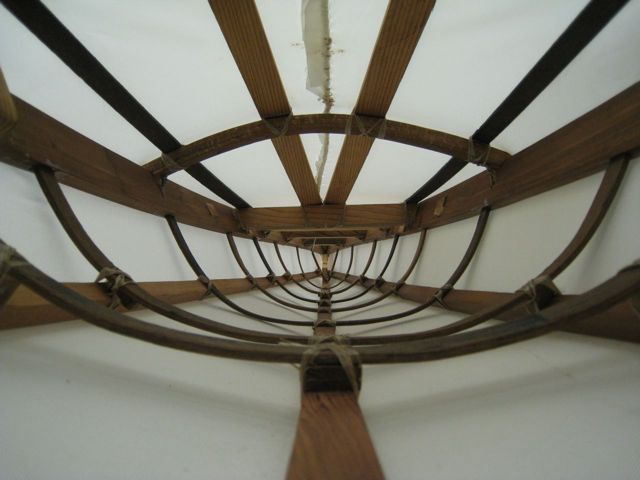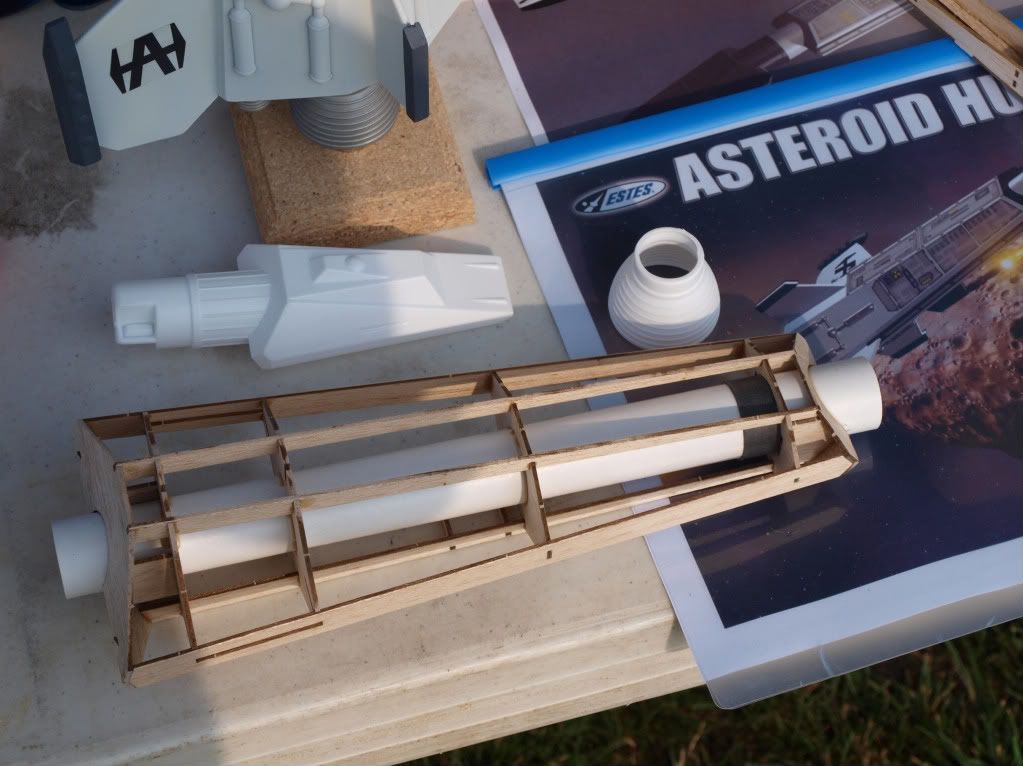Hi, as Dick said, both of us have done work in this area. A lot of how light you can go will depend on your choice of components. I've done a 5.5" diameter 52" tall Pershing 1A that weighs 20 ounces ready to fly with an F-32. I used a lightweight 24mm stuffer tube for the spine, and a BT-80 upper parachute bay to hold the parachute. There was no nose weight required.
I'm using a lightweight foam sheet for the ribs and centering rings and 2mm thick for the skins. The skins weigh about 4-5 ounces for an 8" by 70" long airframe.
Add up your weights of components, I think you'll be surprised at how much things add up.
For larger models I've been using LOC 29mm tube for the stuffer and pml 4" by 12-14" long parachute bay. PML tubing isn't required for strength, but it helps with my models CG since I'm modeling things with small rear fins that normally need nose weight.
As an example of an 8" diameter Titan Missile I just built, the foam outer structure and skin weighed 15 ounces total including glue, the rest of the weight was the 29mm stuffer tube(5.5 ounces) pml parachute bay (5.5 ounces), 50" chute(4 ounces), nomex blankets and kevlar line(5 ounces), altimeter 2 ounces, a few 3/32" ply centering rings to attach recover and rail buttons to(6 ounces) and fins(depends on your material) 4-10 ounces.
I know that you can do it with motor ejection on G-80's if you are really careful and plan ahead, if you want to build it with CG margin for a larger motor and altimeter it puts you a few ounces over that far 101 limit. You can avoid the nomex and use wadding, use a very lightweight chute, dump the altimeter, use very lightweight recovery attachment hardware, not use a retainer, use lite ply for the centering rings that the rail buttons attach to to save weight. I have not used any wood structure for my models, nor have I used any paper/cardboard but I don't think the foam would be heavier than those. Most of the weight in a large model is not the outer structure.
If you chose a lightweight monokote or similar skin, that will save a few ounces, but you need to plan ahead for how/where you are going to attach the launch lug or rail buttons, I use a ply plate at the top/bottom that I attach the buttons to. You also need to consider landing loads and how you are going to attach your fins since you won't have any skin strength to apply fillets to, you need to tie them to the stuffer tube somehow.
I made a spreadsheet with all of the components with estimated weights, and filled in as I went with actual weights to be sure I was on track. Use rocksim or openrocket and plug in the actual weights of components and the motor planned so that you can see where your CG is going to be to avoid having to add nose weight, or need a bigger motor due to overweight and need more nose weight later...
I've attached a picture from openrocket of a Falcon showing the internal structure/stuffer tube, parachute bay etc.
There are full length stringers that lock into the foam centering rings that are spaced about 6" apart, 8 stringers, and the 2mm skin.
It moves the parachute weight as far forward as possible. Only the very rounded tip ejects. You want to be sure you keep the nose light, attach the balast to the airframe at the top under the skin, otherwise you have a heavy cone swinging around that will crush your lightweight airframe if it hits it.
I also put a picture of the titan II which shows the outer airframe and the upper parachute bay and how I did the tapered cone around the parachute bay before sheeting. The other picture shows some of my foam models, as you can see they can look pretty nice. If built using just LOC 7.5" tubing, 38mm mounts and 1/4" ply fins, all of these would weigh 20# or more ready to fly, for the redstone and Titan I have done just that and that's what they weigh, so the lightweight structure allows much smaller motors to be flown at the same scale. You can fly these models on H-128's for around 500' altitude for small fields on the low end, they are a bit heavy for G-80's.
These larger models, 7 to 10" diameter have weighed 4# to 6.4# ready to fly with motor and have flown on up to I-205's. But these were scale models so had extra details, covering, nozzles, clear fins etc that added to the weight, you can do a simple 3fnc design that will save weight.
AstronMike had done a G powered monokote covered structure back in the day, he may chime in on what worked for him. He said he had to be very careful handlng it. Mine are a bit more tolerant of handling. The funny thing is the way these fly, they are so low in sectional density, that they bleed off speed quickly and the rocket doesn't arc over, it just sort of stalls straight up, then ejects.











